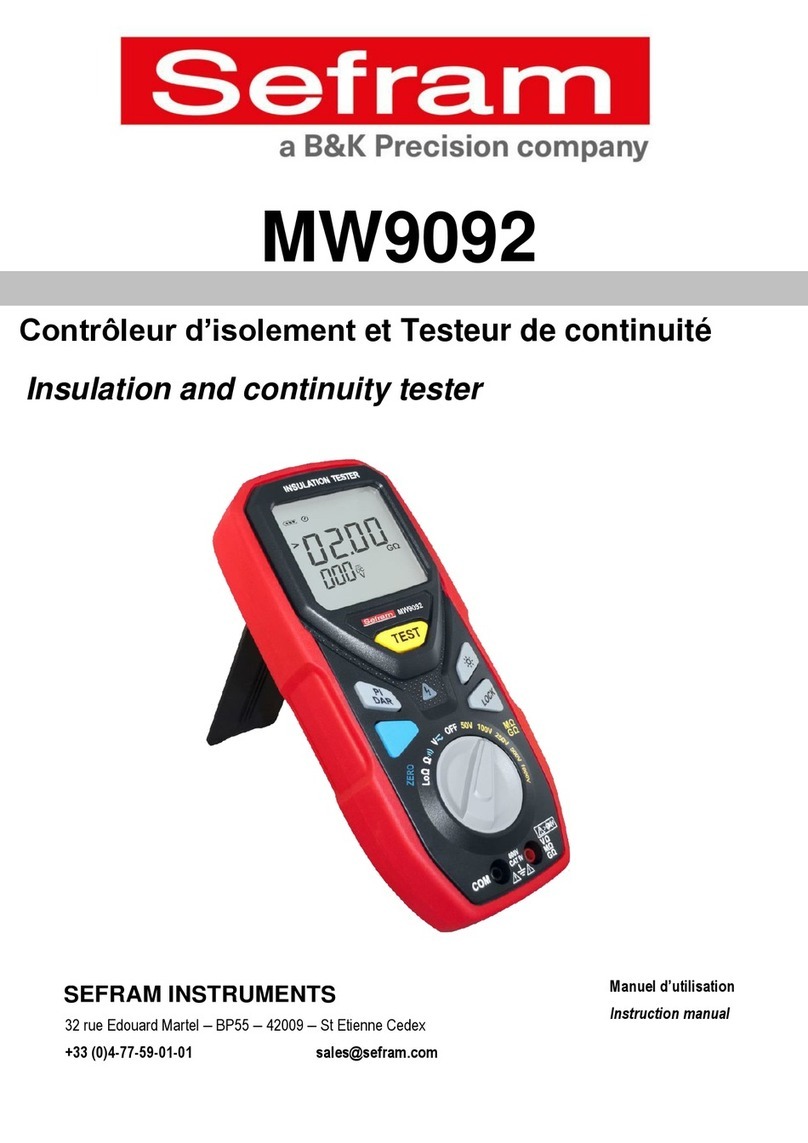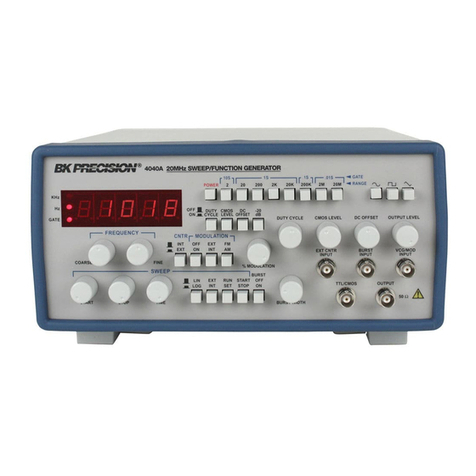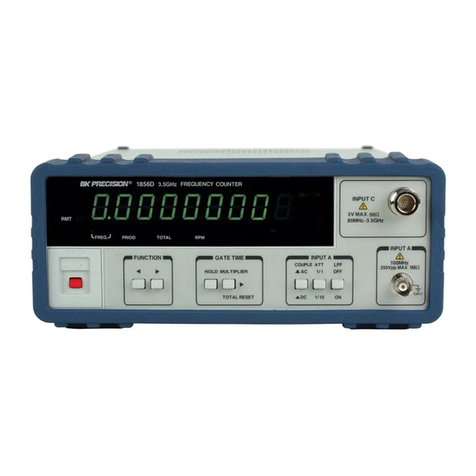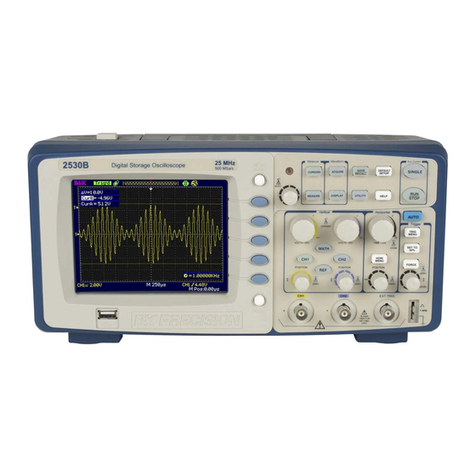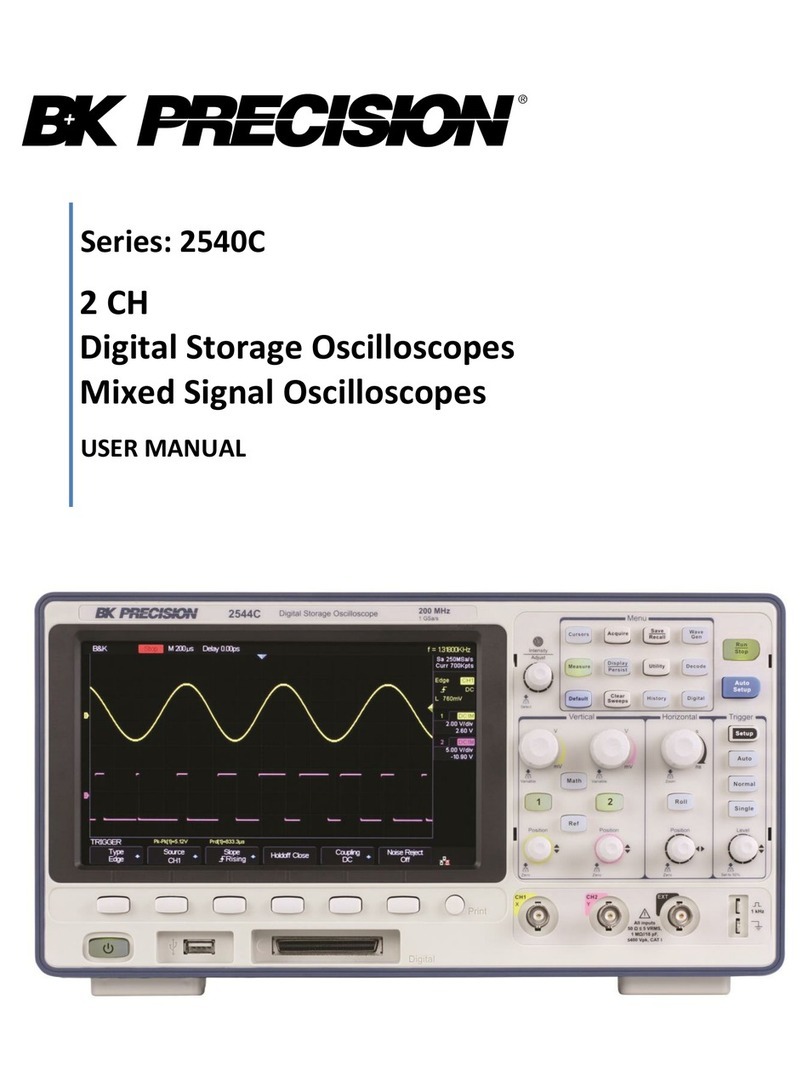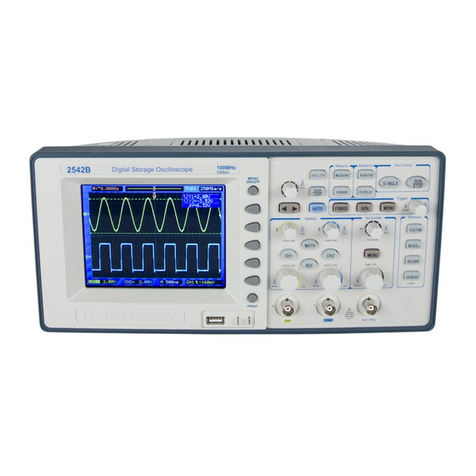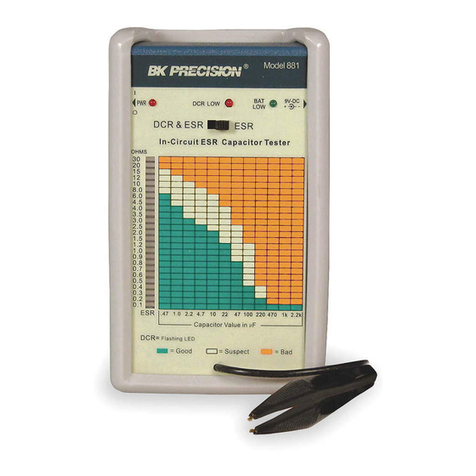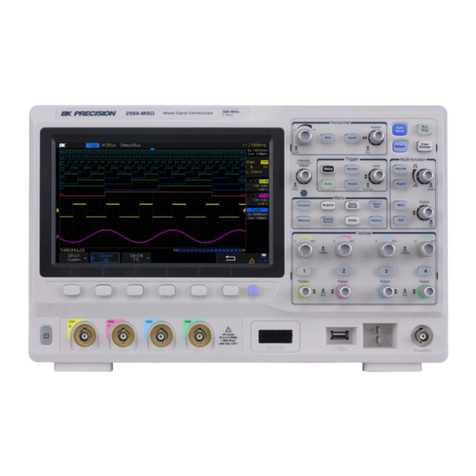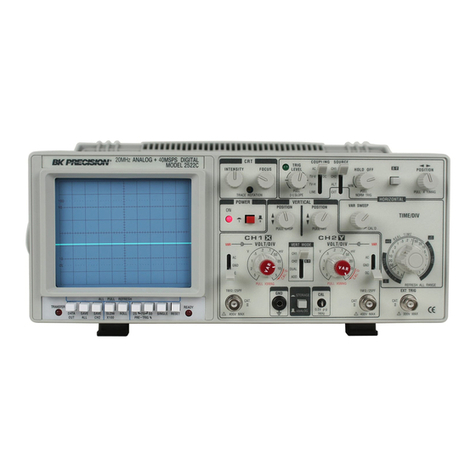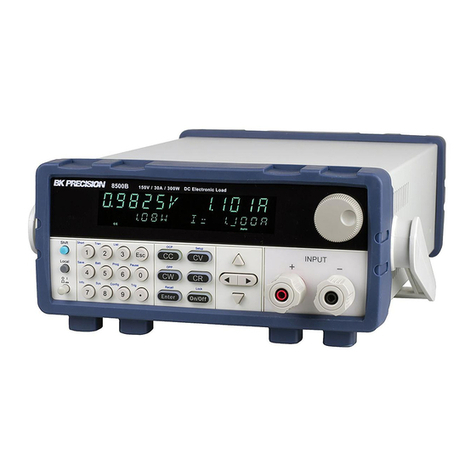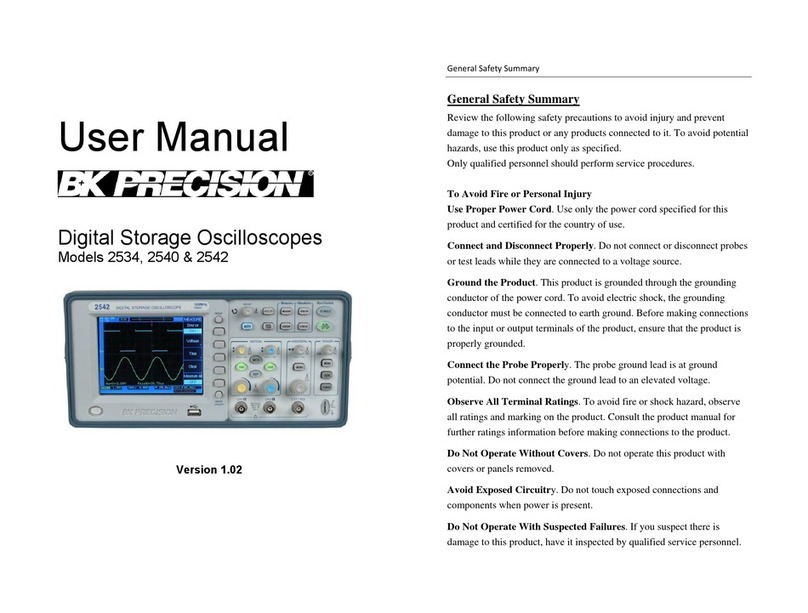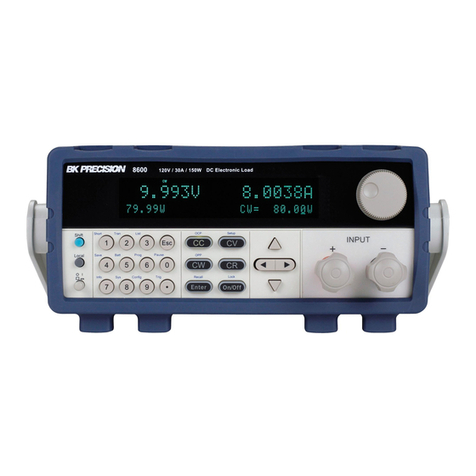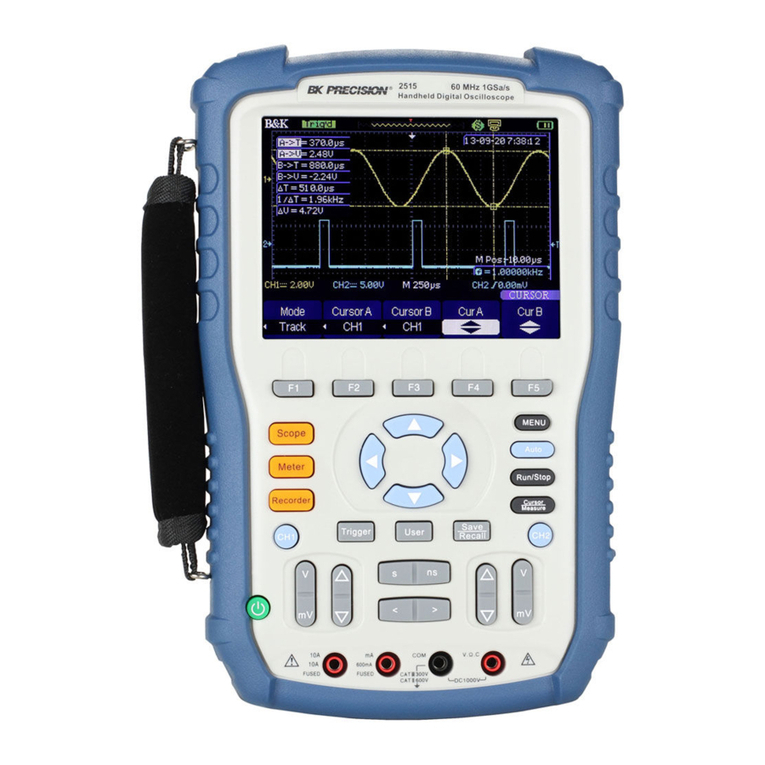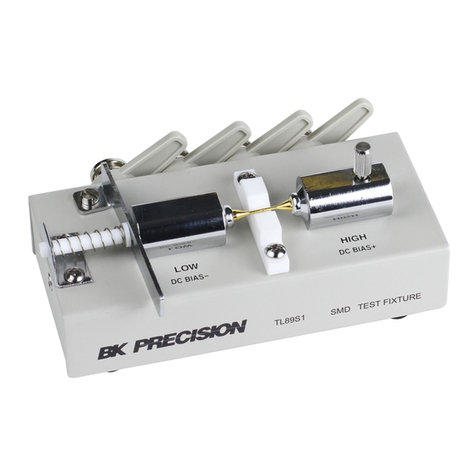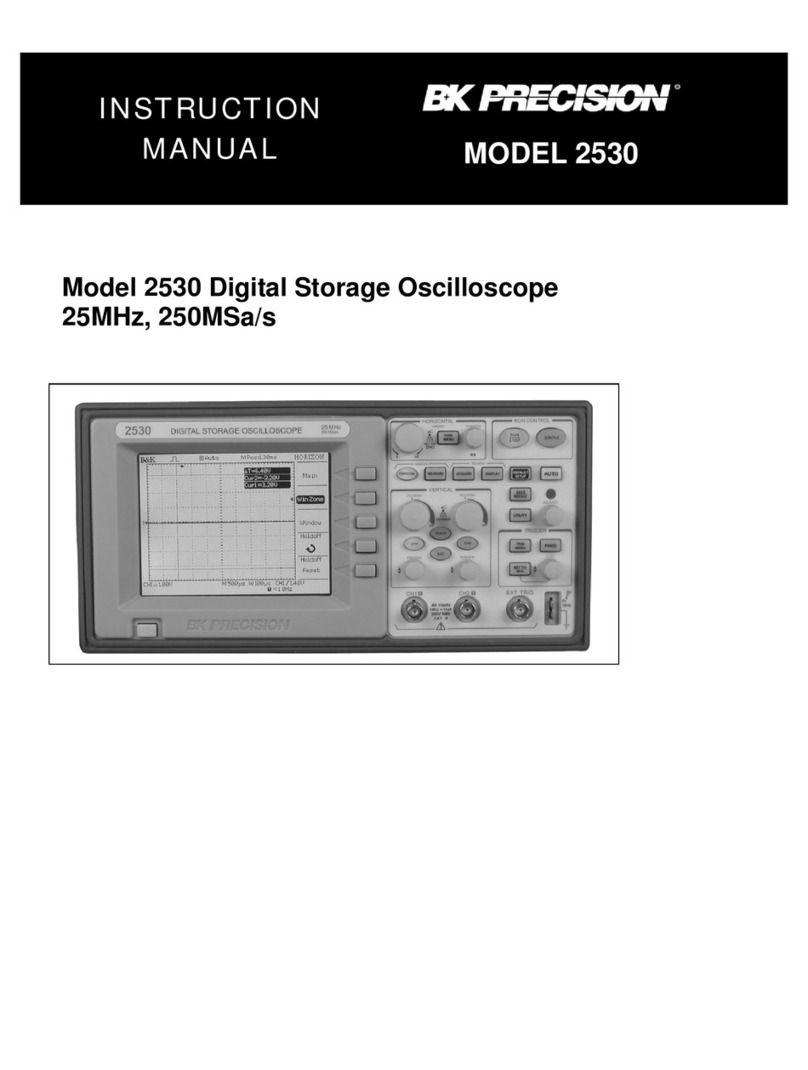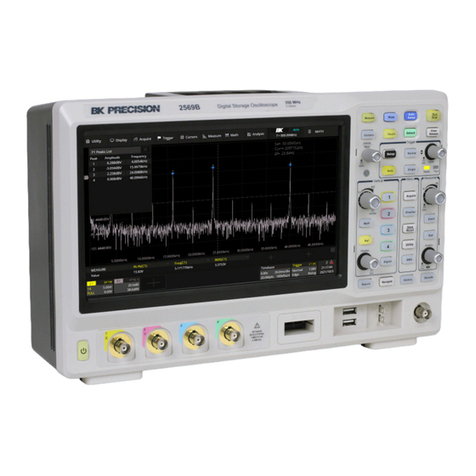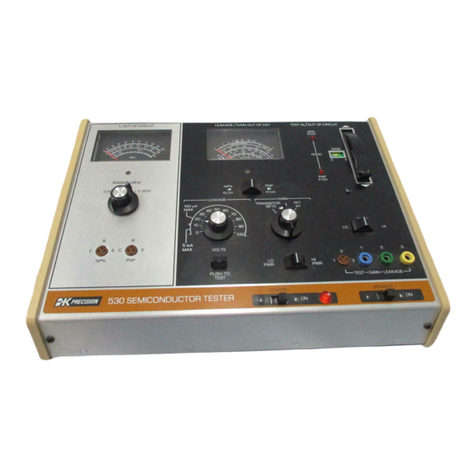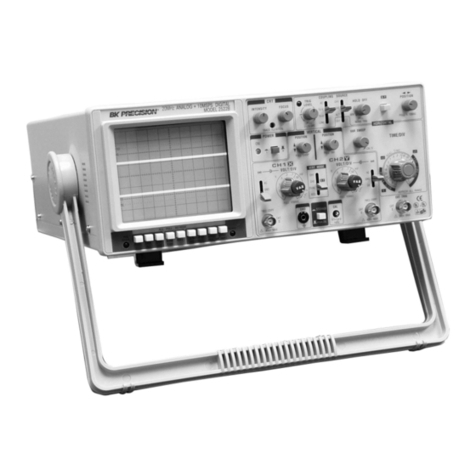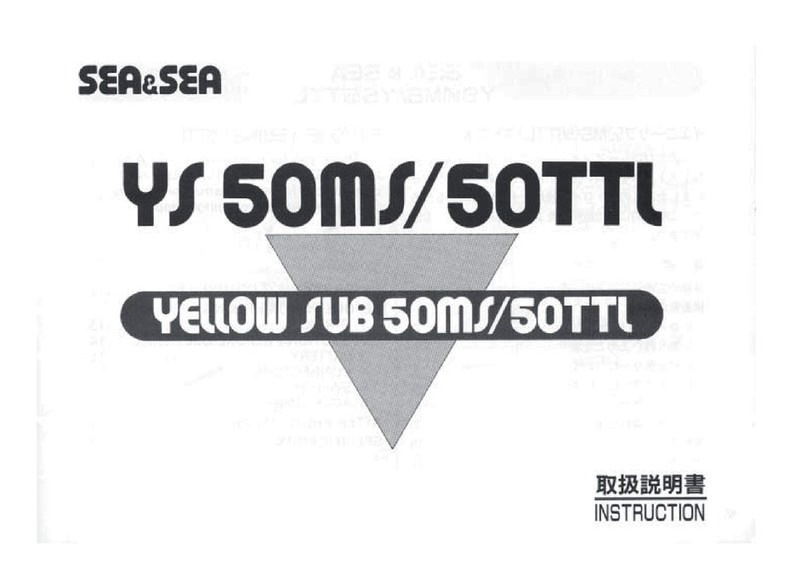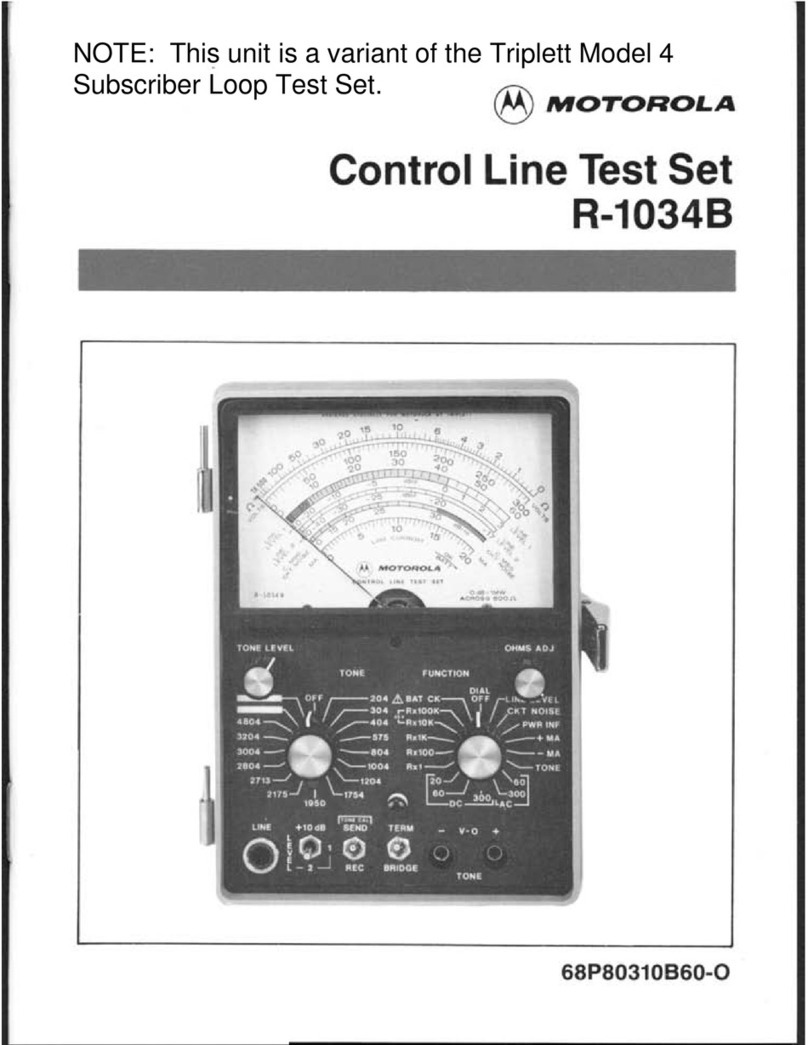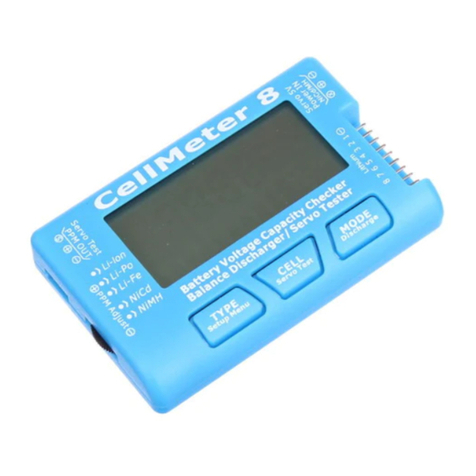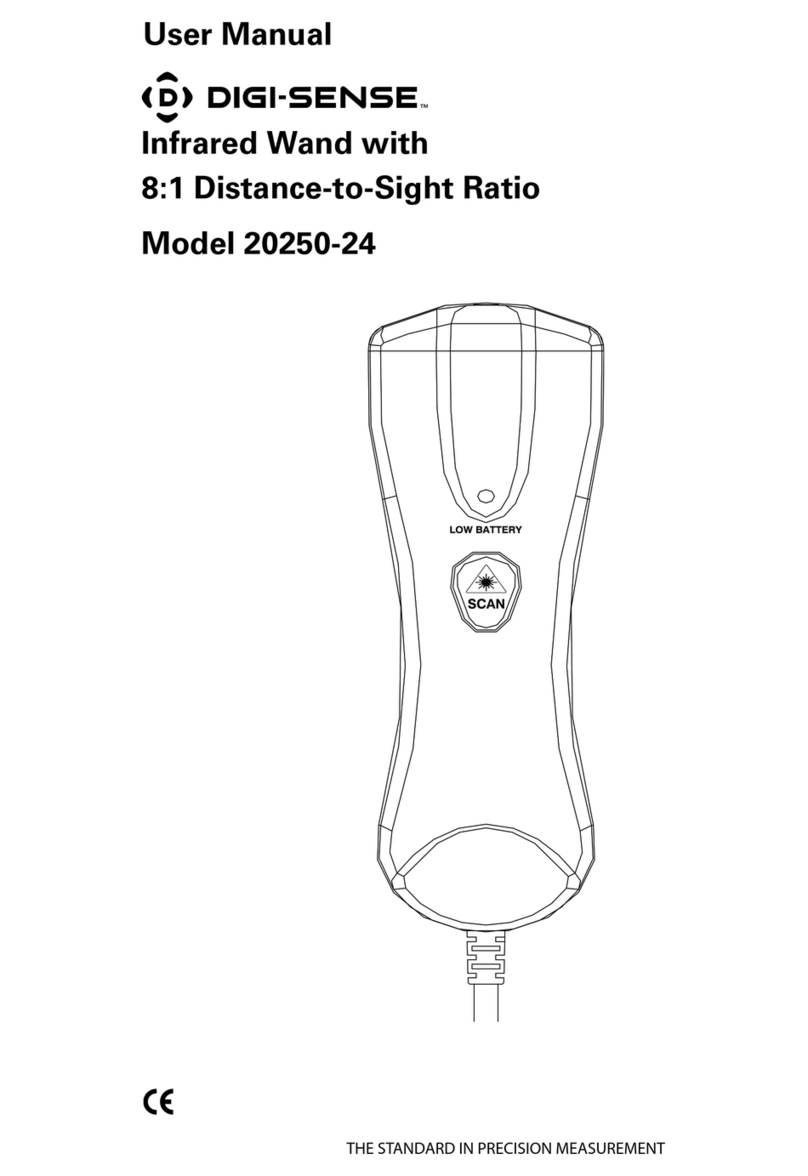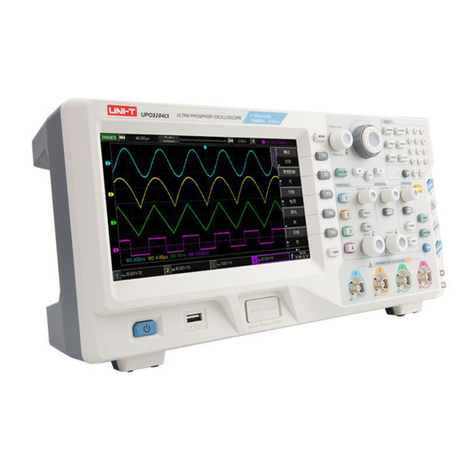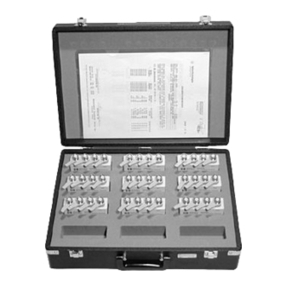
CIRCIIIT DESCRIPITON
5 MHz bandwidth. Front panel vertieal posi-
tioning. is aeeomplished by potentiom
eter
VRz, I eOS,
asit shifts the de biasof Q110
and Q111. The vertieal defleetion plates of
the CRT are fed from the eolleetorsof Q110
and Q111,
when
NOR-DIRswitehSS
is set to
NOR. At this point, the waveform is about10
volts per division.
With NOR-DIR switeh 55 set to DIR, the
vertieal defleetion plates of the CRT are
eonneeted
direetly to the V DIR terminal and
ground.
A sample of the vertieal final amplifier
output is available to the horizontal ehannel
eireuits for internal syne.
HOruZONTAL CHANNBL CIBCITrIII
Refer to Fig. 4 for a simplified diagram
of
the horizontal ehannel eireuits and to the
sehematie
diagram at the rear of the manual
for full eireuit details.
SweepGenerator
The sweep generator eireuit eonsistsof a
reeurrent sweep sawtooth oseillator built
around
transistors
Q112
andQ113.
The frequeney
at whiehthe sawtoothoseil-
lator operates
is determinedby the RC time
eonstant of the eomponents
in the emitter
eireuitof Q113
(Ca, C4,C5, VR4and
R141).
SWEEP
RANGEswiteh,32,
seleetsthe eapaei-
tanee eomponentof the RC eireuit: when
set
to the 10-100
position,
C3 is seleeted,
provid-
ing a eapaeitanee
of 0.47
UF;
whenset to the
100-1k position, C4 is seleeted,
providing
a
eapaeitanee
of 0.047
pF;whenset to the 1 k-
10k position, C5 is seleeted, providing a
eapaeitaneeof 390 pF; and, when set to the
10k-100
k position,the stray eapaeitanee
of
the eireuit is seleeted. In eaeh ease, the
SWEEP
VARI/EXT GAINeontrol,VR4,and
its
series resistor R141, are seleeted as the
resistanee
eomponent
of the RC eireuit. The
RC time eonstant is greatest when VR4 is
fully eountereloekwise
and its resistanee is
highest. TheRC time eonstantisredueedand
the sweep frequeney is inereased
as V.R4is
turned
eloekwise.
Fig. 5 is a partial sehematie
diagram
of the
sweep generator eireuit with waveforms to
helpillustrate operation
of the eireuit.
First, let us eonsider the free running
manner of operation where no syne signal is
applied. During the negative-going ramp
portion of the sweep waveform (at Ql13
emitter), Q112eonduets
and establishes
a de
voltage at the base of Q113,eutting it off.
With Q113eut off, the seleeted
sweep
range
eapaeitor eharges toward -15 volts through
VR4 and R141. The rate of ehargeis deter-
mined by the RC time eonstant
as previously
deseribed. As the eapaeitor eharges, the
voltage at the emitter of Q113
ramps nega-
tively. The voltage eontinues
to ramp nega-
tively, whiehdeereases
the bias
on Q113,
until
the threshold
of eonduetion
isreaehed.
The negative-going ramp ends when the
threshold of eonduetion
of Q113 is reaehed.
Q113 eonduets and quickly diseharges the
sweep
range eapaeitor to the de value estab-
lishedby the voltage divider of R138,
Q113,
VR4, and R141. This eonduetion
of Q113
develops a negative pulse at the eolleetor,
whieh is fed baekthroughC108
to the baseof
Ql12, cutting it off. TheRC time eonstant
of
C108 and R135 determine the eutoff period
for Ql12. This is the very short interval when
the sawtoothwaveformreturnsto its positive-
most point. Thenegativepulse
at the baseof
Q112 is inverted to a positive pulse at the
eolleetor, and is direetly eoupledto the base
of Q113 to eontrol the sweep
eapaeitor
dis-
eharge
period. At the endof this pulse,
Q113
is again eut off, and the next negative-going
ramp begins. This eyele is eontinuously
re-
peated. The sawtooth waveform ramps from
approximately +2 volts to -2 volts, and is
limited to the mostlinearportionof the sweep
eapaeitorehargeeyele.
Now let us eonsider
eireuit operationwhen
a syne signal is applied. Refer again to the
waveforms in Fig. 5. Syne
signals
are fed to
Q112,
superimposed
on the sweep
reset pulse,
invertedand applied
to the baseof Q113. A
negative-going
edge
of the syne
input signal
is
inverted to a positive-going
edgeat the base
of Ql13. If this superimposed
positive edge
oeeursjust before the end of a free-running
sweep, it will bias Q113 into eonduetion
and
b
a
Yt






















